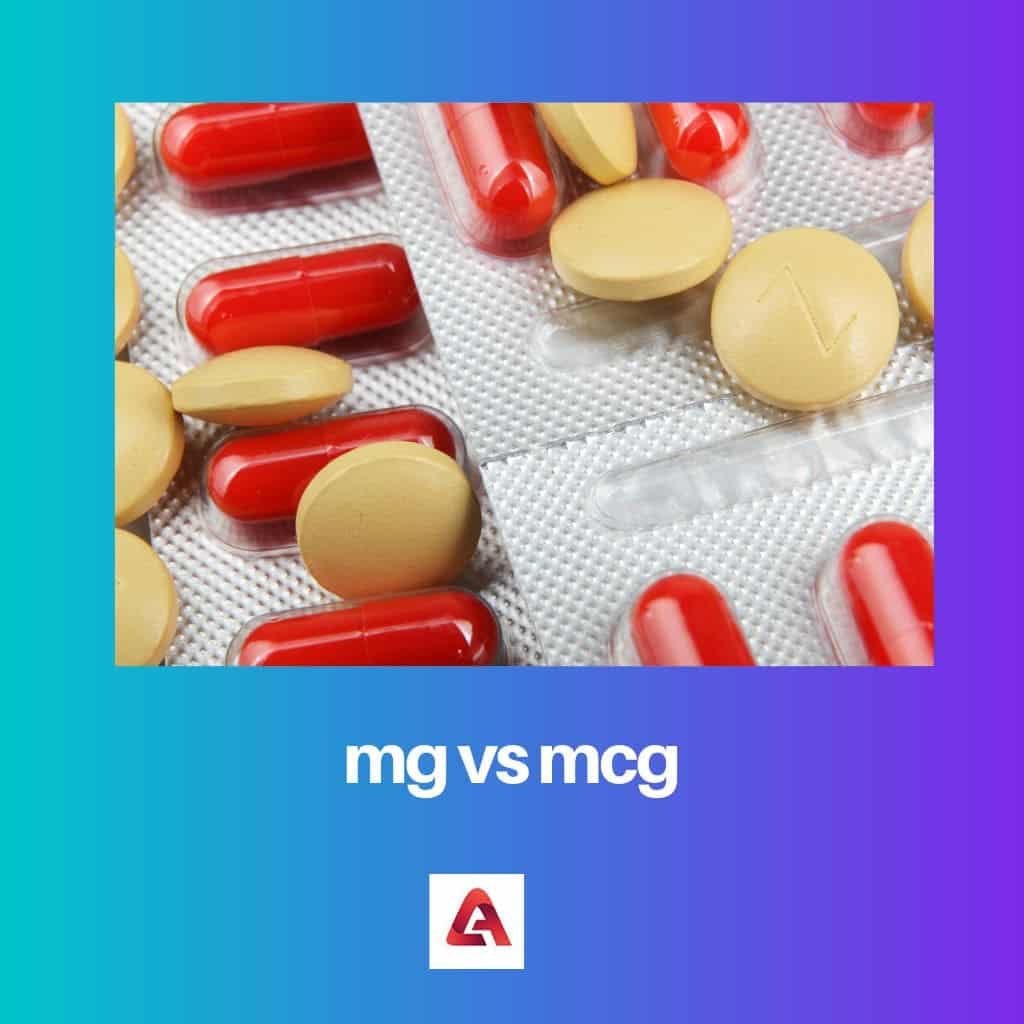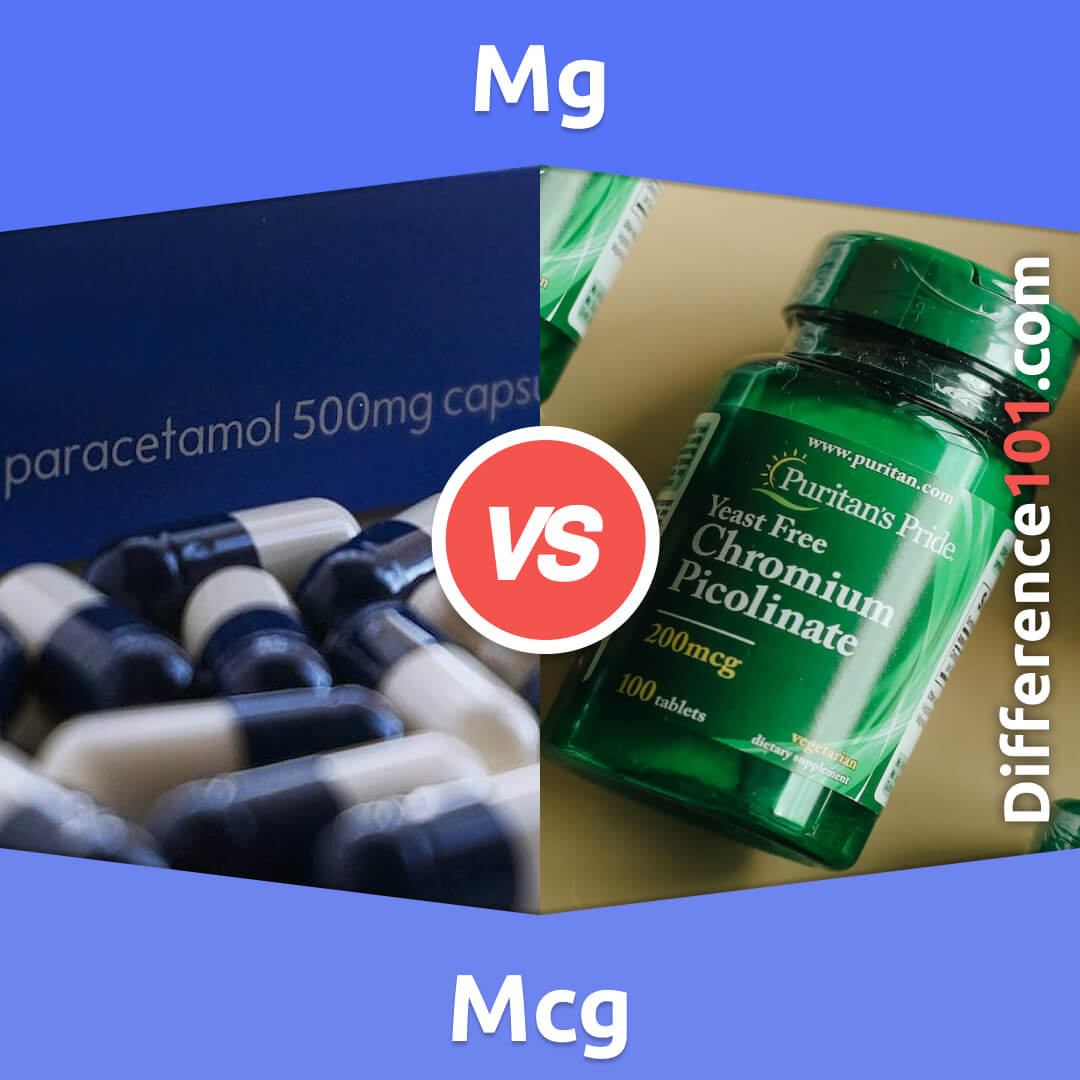Mcg Vs Ug - Getting Clear On Tiny Measurements
Have you ever found yourself looking at a medicine bottle or a vitamin label and feeling a little puzzled by the letters "mcg" or "ug"? It's a pretty common experience, to be honest, because these little abbreviations show up all over the place when we're talking about very small amounts of something. They are, as a matter of fact, both ways of writing the same thing: a microgram. It's a tiny unit of weight, and it plays a rather big part in how we measure important things, especially in health.
Knowing what these symbols stand for and how they relate to each other can make a real difference, particularly when you're keeping track of things like medication doses, such as for levothyroxine, or figuring out how much of a certain vitamin you're taking. Sometimes, it feels like there are too many different ways to say the same thing, and that can certainly lead to a bit of head-scratching, you know?
This discussion is here to help clear things up, so you can feel more sure about what you're seeing on those labels. We'll look at what a microgram really means, why it has a couple of different abbreviations, and how you can easily make sense of it all when it truly matters for your daily wellness. It's quite straightforward once you get the hang of it, actually.
Table of Contents
- What's the Real Story with mcg vs ug?
- Unpacking the Microgram - mcg vs ug
- Why Do We See Both "mcg" and "ug"?
- Making Sense of Notation - mcg vs ug
- How Does This Matter for Your Health?
- Dosing and Supplements - The Role of mcg vs ug
- Are There Tools to Help with mcg vs ug Conversions?
- What Else Should We Know About Tiny Units?
What's the Real Story with mcg vs ug?
When you spot "mcg" or "ug" on a package, you are, in fact, looking at the exact same unit of measurement. Both of these abbreviations stand for "microgram." A microgram is a very, very small unit of weight or mass. To give you a bit of a picture, it's like taking a gram and dividing it into a million tiny pieces. One of those tiny pieces is a microgram. So, it's a way of talking about truly minuscule amounts of a substance, which is pretty common for things like vitamins, minerals, and many types of medication. It's really just a way to keep things consistent when measuring something so small.
Unpacking the Microgram - mcg vs ug
Let's get a little more specific about what a microgram truly means. A microgram, with its symbol often shown as μg or mcg, represents one millionth of a gram. To put it another way, if you have a gram, you would need a million micrograms to equal it. Think of it like this: a gram is a fairly light amount, perhaps the weight of a paperclip. Now, imagine dividing that paperclip's weight into a million separate parts. That's how small a microgram really is, you know? It's a standard unit that helps us measure substances where even a tiny bit can make a big impact, especially in medical settings. The symbol 'μ' is actually the Greek letter 'mu', and it's the scientific way to abbreviate the word "micro."
Why Do We See Both "mcg" and "ug"?
It can seem a little odd, can't it, that we have two different ways to write the same thing? The reason we often see both "mcg" and "ug" is mostly about how things have been done over time and in different places. The symbol "μg" uses the Greek letter 'mu' (μ), which is the scientifically preferred way to show "micro." However, because that Greek letter isn't always easy to type on every keyboard or show in every computer system, the abbreviation "mcg" came into use as a simpler, more common alternative. It's a bit like how some people might say "colour" and others "color" – different spellings, same meaning, in a way. So, when you see "mcg," it's basically a keyboard-friendly version of "μg."
Making Sense of Notation - mcg vs ug
For the most part, when you encounter "mcg" and "ug," you can be quite sure they are referring to the same measurement. For example, if something says "50 micrograms (ug)," it's really the same as saying "50 micrograms (mcg)." They are just two different ways to write down the same amount of a substance. This is very important to remember, especially when you are comparing doses or amounts of things like vitamins. It means you don't need to do any special math to switch between them because they are already equal. It's a bit like writing "pounds" or "lbs" – same thing, just different ways to express it, honestly. This consistency helps everyone understand the exact quantity being discussed.
How Does This Matter for Your Health?
Understanding these tiny units is pretty important, especially when it comes to your health. Medications, like levothyroxine for thyroid conditions, are often measured in micrograms because the body needs very precise, small amounts for them to work correctly. Similarly, many vitamins and minerals are measured in micrograms. Knowing that "mcg" and "ug" are interchangeable helps you feel confident that you're getting the right dose, no matter which abbreviation is used on the label. This can make a real difference in how you manage your health and well-being, as a matter of fact.
Dosing and Supplements - The Role of mcg vs ug
When you're looking at vitamin bottles, you might see amounts listed in micrograms, milligrams (mg), or even International Units (IU). For example, some vitamin D supplements might say "25 mcg" which is the same as "25 µg," and that often equals "1000 IU." Or, a higher dose might be "75 mcg," which is "75 µg," and that equals "3000 IU." This shows how "mcg" and "ug" are used to talk about the physical weight of the product. The "IU" is a bit different; it measures how strong or active a substance is in the body, not its weight. So, while "mcg" or "ug" tell you the physical amount, "IU" helps compare how much of an effect different forms of a vitamin might have, which is pretty neat.
Let's consider a common example, like folate. The recommended daily amount for an adult might be around 320 micrograms. If you needed to know that in milligrams, you would simply divide 320 by 1,000, since one milligram is equal to 1,000 micrograms. This kind of conversion is really useful for making sure you're getting the right balance of nutrients, which is definitely a good thing for overall health. It's all about making these small numbers make sense for your body's needs, you know?
Are There Tools to Help with mcg vs ug Conversions?
Absolutely, there are! Since "mcg" and "ug" are the same, converting between them is actually super easy – you don't really need a tool for that particular switch, as 50 ug is always 50 mcg. However, for converting micrograms to other units like milligrams or grams, or even to International Units, there are many simple online calculators available. These tools are pretty handy, and they let you quickly change numbers from one unit to another with just a few clicks. You can often swap between converting "mcg to μg" or "μg to mcg" by using a little swap icon, like rotating arrows, which is quite convenient. If you want to start over, there's usually a reset button to clear everything out. It makes managing these tiny measurements a breeze, to be honest.
For instance, if you're trying to figure out how many micrograms are in a milligram, these tools can show you that one milligram is equal to 1,000 micrograms. Or, if you're looking at a kilogram, which is the base unit for mass in the international system, it contains a whopping one billion micrograms (that's 1,000,000,000 mcg or ug!). While these calculators are generally quite good, it's always a smart idea to double-check the results, just in case there are any tiny rounding errors. They're designed to make your life simpler, and they really do help with that, basically.
What Else Should We Know About Tiny Units?
Beyond micrograms, there are other small units that pop up when we talk about weight and substances. A milligram, often written as "mg," is another common one. One milligram is equal to one thousandth of a gram, and it's also equal to one thousand micrograms. So, if you have 1 mg, you have 1,000 mcg or 1,000 ug. This means that a milligram is a thousand times larger than a microgram, which is a pretty big jump when you think about it. Understanding these relationships helps you get a clearer picture of the amounts involved, especially when comparing different products or doses. It's a useful bit of information to keep in your back pocket, sort of.
We also sometimes hear about "grams," which are a metric measurement of weight. An older way of measuring weight, the ounce, is about 28.4 grams. So, grams are a much larger unit than milligrams or micrograms. Then there's "mcg/dl," which is a way to measure density, showing how much of a substance is in a certain volume, like blood. This is different from just measuring weight. All these units, like mg, mcg, ug, and IU, can make measuring vitamins and minerals seem a little confusing at first glance, but once you know what each one represents, it becomes much clearer. It's like learning a new language for measurements, really.
In some discussions, or perhaps in older texts, you might come across a different interpretation, where "ug" is seen as microgram and "mcg" is sometimes described as a "nanogram" (which is one thousandth of a microgram), suggesting that 1 ug might equal 1000 mcg in that context. However, for the most part, especially in current common and medical usage, "mcg" and "ug" are understood to be the same unit, both representing a microgram. This difference in interpretation highlights why it's so helpful to be aware of the potential for confusion with these symbols, particularly in medical contexts, as the source text also points out. It's a good reminder to always be clear about what measurement is being used, especially if there's any doubt, you know?
So, to sum up, this discussion covered how "mcg" and "ug" are both abbreviations for "microgram," a very small unit of weight equal to one millionth of a gram. We looked at why both notations exist, with "mcg" being a more keyboard-friendly version of "μg." The text explained that these units are often used for precise measurements in medicine and for vitamins, emphasizing that 50 ug is exactly the same as 50 mcg. We also touched upon how conversion tools can help with related units like milligrams and International Units, and noted the importance of understanding these measurements for health. Finally, it acknowledged that while typically interchangeable, there can sometimes be different interpretations of these symbols, highlighting the need for clarity.

mg vs mcg: erinevus ja võrdlus

MCG vs Traditional EKG Testing | HeartCore Health

Mg vs. Mcg: 5 Key Differences, Pros & Cons, Similarities | Difference 101